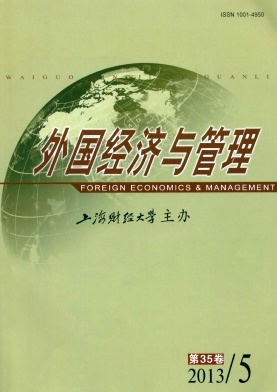挑战性—阻碍性压力源研究述评
外国经济与管理 2013 年 第 35 卷第 05 期, 页码:40 - 49
摘要
参考文献
摘要
挑战性—阻碍性压力源分类框架指出,工作压力源可依据其性质及效果分为挑战性压力源与阻碍性压力源,表明压力亦有"好""坏"之分。本文在介绍了挑战性—阻碍性压力源概念内涵与测量方法的基础上,重点讨论了挑战性—阻碍性压力源的认知交互理论、资源保存理论与工作要求—控制模型等基础理论,以及相应的作用效果模型,并梳理了有关挑战性—阻碍性压力源作用效果的实证研究结论,最后对未来研究重点进行了展望。
[1]Beehr T A,et al.Back to basics:Re-examination of demand-control theory of occupational stress[J].Work&Stress,2001,15(2):115-130.
[2]Boswell W R,et al.Relations between stress and work out-comes:The role of felt challenge,job control,and psychologi-cal strain[J].Journal of Vocational Behavior,2004,64(1):165-181.
[3]Cavanaugh M A,et al.An empirical examination of self-repor-ted work stress among US managers[J].Journal of Applied Psychology,2000,85(1):65-74.
[4]Chong D S F,et al.A double-edged sword:The effects of challenge and hindrance time pressure on new product devel-opment teams[J].IEEE Transactions on Engineering Manage-ment,2011,58(1):71-86.
[5]Culbertson S S,et al.Leader-member exchange and work-fa-mily interactions:The mediating role of self-reported chal-lenge-and hindrance-related stress[J].Journal of Psychology:Interdisciplinary and Applied,2009,144(1):15-36.
[6]Haar J M.Challenge and hindrance stressors in New Zealand:Exploring social exchange theory outcomes[J].International Journal of Human Resource Management,2006,17(11):1942-1950.
[7]Hobfoll S E.Conservation of resources:A new attempt at conceptualizing stress[J].American Psychologist,1989,44(3):513-524.
[8]Hobfoll S E.The influence of culture,community,and the nes-ted-self in the stress process:Advancing conservation of re-sources theory[J].Applied Psychology,2001,50(3):337-421.
[9]Jamal M and Ahmed S W.Relations of challenge-hindrance stress with burnout,job satisfaction and health:Type a be-havior as a moderator[J].International Journal of Business and Management Tomorrow,2012,2(5):1-7.
[10]Jex S M and Beehr T A.Emerging theoretical and methodo-logical issues in the study of work-related stress[A].Ferris G R and Rowland K(Eds.).Research in personnel and human resources management[C].Greenwich,CT:JAI Press,Inc.,1991,9:311-365.
[11]Karasek R A.Job demands,job decision latitude,and mental strain:Implications for job redesign[J].Administrative Sci-ence Quarterly,1979,24(2):285-308.
[12]Lazarus R S.Psychological stress in the workplace[J].Jour-nal of Social Behavior&Personality,1991,6(7):1-13.
[13]LePine J A,et al.Challenge and hindrance stress:Relation-ships with exhaustion,motivation to learn,and learning per-formance[J].Journal of Applied Psychology,2004,89(5):883-891.
[14]LePine J A,et al.A meta-analytic test of the challenge stres-sor-hindrance stressor framework:An explanation for incon-sistent relationships among stressors and performance[J].A-cademy of Management Journal,2005,48(5):764-775.
[15]Lin L,et al.Challenge and hindrance job demands,job re-source,and their relationships with vigor and emotional ex-haustion[R].Paper presented at the2009International Con-ference on Management Science&Engineering,Moscow,Rus-sia,2009.
[16]McCauley C D,et al.Assessing the developmental compo-nents of managerial jobs[J].Journal of Applied Psychology,1994,79(4):544-560.
[17]Pearsall M J,et al.Coping with challenge and hindrance stressors in teams:Behavioral,cognitive,and affective out-comes[J].Organizational Behavior and Human Decision Processes,2009,109(1):18-28.
[18]Podsakoff N P,et al.Differential challenge stressor-hindrance stressor relationships with job attitudes,turnover intentions,turnover,and withdrawal behavior:A meta-analysis[J].Jour-nal of Applied Psychology,2007,92(2):438-454.
[19]Rodell J B and Judge T A.Can“good”stressors spark“bad”behaviors?The mediating role of emotions in links of chal-lenge and hindrance stressors with citizenship and counterpro-ductive behaviors[J].Journal of Applied Psychology,2009,94(6):1438-1451.
[20]Schaubroeck J,et al.Antecedents and consequences of role stress:A covariance structure analysis[J].Journal of Organi-zational Behavior,1989,10(1):35-58.
[21]Tai W T and Liu S C.An investigation of the influences of job autonomy and neuroticism on job stressor-strain relations[J].Social Behavior and Personality:An International Jour-nal,2007,35(8):1007-1020.
[22]Wallace J C,et al.Work stressors,role-based performance,and the moderating influence of organizational support[J].Journal of Applied Psychology,2009,94(1):254-262.
[23]Webster J R,et al.Toward a better understanding of the effects of hindrance and challenge stressors on work behavior[J].Journal of Vocational Behavior,2010,76(1):68-77.
[24]Webster J R,et al.Extending the challenge-hindrance model of occupational stress:The role of appraisal[J].Journal of Vocational Behavior,2011,79(2):505-516.
[25]官菊梅等.基于压力分类视角的社会支持调节作用探讨[J].北京大学学报(自然科学版),2011,47(1):166-174.
[26]刘得格等.挑战-阻碍性压力源与工作投入和满意度的关系[J].管理科学,2011,24(2):1-9.
[27]苏密尔凯著.工作压力[M].(马剑虹译).北京:中国轻工业出版社,2007.
[28]张韫黎,陆昌勤.挑战性—阻断性压力(源)与员工心理和行为的关系:自我效能感的调节作用[J].心理学报,2009,(6):501-509.
[2]Boswell W R,et al.Relations between stress and work out-comes:The role of felt challenge,job control,and psychologi-cal strain[J].Journal of Vocational Behavior,2004,64(1):165-181.
[3]Cavanaugh M A,et al.An empirical examination of self-repor-ted work stress among US managers[J].Journal of Applied Psychology,2000,85(1):65-74.
[4]Chong D S F,et al.A double-edged sword:The effects of challenge and hindrance time pressure on new product devel-opment teams[J].IEEE Transactions on Engineering Manage-ment,2011,58(1):71-86.
[5]Culbertson S S,et al.Leader-member exchange and work-fa-mily interactions:The mediating role of self-reported chal-lenge-and hindrance-related stress[J].Journal of Psychology:Interdisciplinary and Applied,2009,144(1):15-36.
[6]Haar J M.Challenge and hindrance stressors in New Zealand:Exploring social exchange theory outcomes[J].International Journal of Human Resource Management,2006,17(11):1942-1950.
[7]Hobfoll S E.Conservation of resources:A new attempt at conceptualizing stress[J].American Psychologist,1989,44(3):513-524.
[8]Hobfoll S E.The influence of culture,community,and the nes-ted-self in the stress process:Advancing conservation of re-sources theory[J].Applied Psychology,2001,50(3):337-421.
[9]Jamal M and Ahmed S W.Relations of challenge-hindrance stress with burnout,job satisfaction and health:Type a be-havior as a moderator[J].International Journal of Business and Management Tomorrow,2012,2(5):1-7.
[10]Jex S M and Beehr T A.Emerging theoretical and methodo-logical issues in the study of work-related stress[A].Ferris G R and Rowland K(Eds.).Research in personnel and human resources management[C].Greenwich,CT:JAI Press,Inc.,1991,9:311-365.
[11]Karasek R A.Job demands,job decision latitude,and mental strain:Implications for job redesign[J].Administrative Sci-ence Quarterly,1979,24(2):285-308.
[12]Lazarus R S.Psychological stress in the workplace[J].Jour-nal of Social Behavior&Personality,1991,6(7):1-13.
[13]LePine J A,et al.Challenge and hindrance stress:Relation-ships with exhaustion,motivation to learn,and learning per-formance[J].Journal of Applied Psychology,2004,89(5):883-891.
[14]LePine J A,et al.A meta-analytic test of the challenge stres-sor-hindrance stressor framework:An explanation for incon-sistent relationships among stressors and performance[J].A-cademy of Management Journal,2005,48(5):764-775.
[15]Lin L,et al.Challenge and hindrance job demands,job re-source,and their relationships with vigor and emotional ex-haustion[R].Paper presented at the2009International Con-ference on Management Science&Engineering,Moscow,Rus-sia,2009.
[16]McCauley C D,et al.Assessing the developmental compo-nents of managerial jobs[J].Journal of Applied Psychology,1994,79(4):544-560.
[17]Pearsall M J,et al.Coping with challenge and hindrance stressors in teams:Behavioral,cognitive,and affective out-comes[J].Organizational Behavior and Human Decision Processes,2009,109(1):18-28.
[18]Podsakoff N P,et al.Differential challenge stressor-hindrance stressor relationships with job attitudes,turnover intentions,turnover,and withdrawal behavior:A meta-analysis[J].Jour-nal of Applied Psychology,2007,92(2):438-454.
[19]Rodell J B and Judge T A.Can“good”stressors spark“bad”behaviors?The mediating role of emotions in links of chal-lenge and hindrance stressors with citizenship and counterpro-ductive behaviors[J].Journal of Applied Psychology,2009,94(6):1438-1451.
[20]Schaubroeck J,et al.Antecedents and consequences of role stress:A covariance structure analysis[J].Journal of Organi-zational Behavior,1989,10(1):35-58.
[21]Tai W T and Liu S C.An investigation of the influences of job autonomy and neuroticism on job stressor-strain relations[J].Social Behavior and Personality:An International Jour-nal,2007,35(8):1007-1020.
[22]Wallace J C,et al.Work stressors,role-based performance,and the moderating influence of organizational support[J].Journal of Applied Psychology,2009,94(1):254-262.
[23]Webster J R,et al.Toward a better understanding of the effects of hindrance and challenge stressors on work behavior[J].Journal of Vocational Behavior,2010,76(1):68-77.
[24]Webster J R,et al.Extending the challenge-hindrance model of occupational stress:The role of appraisal[J].Journal of Vocational Behavior,2011,79(2):505-516.
[25]官菊梅等.基于压力分类视角的社会支持调节作用探讨[J].北京大学学报(自然科学版),2011,47(1):166-174.
[26]刘得格等.挑战-阻碍性压力源与工作投入和满意度的关系[J].管理科学,2011,24(2):1-9.
[27]苏密尔凯著.工作压力[M].(马剑虹译).北京:中国轻工业出版社,2007.
[28]张韫黎,陆昌勤.挑战性—阻断性压力(源)与员工心理和行为的关系:自我效能感的调节作用[J].心理学报,2009,(6):501-509.
引用本文
李宗波, 李锐. 挑战性—阻碍性压力源研究述评[J]. 外国经济与管理, 2013, 35(5): 40–49.
导出参考文献,格式为:





 10626
10626  327
327

